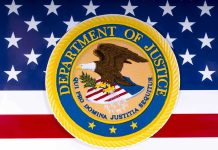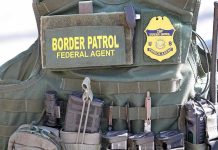
American taxpayers were fleeced for nearly $80 billion in pandemic funds paid to fraudsters using stolen or invalid Social Security numbers, revealing catastrophic failures in the federal government’s identity verification systems.
Key Takeaways
- Federal agencies disbursed approximately $79 billion in COVID-19 relief funds to applications with questionable Social Security numbers
- The Pandemic Response Accountability Committee identified 1.4 to 1.5 million potentially fraudulent applications across three major pandemic assistance programs
- Basic identity verification, such as cross-referencing Social Security numbers with birth dates, could have prevented much of this fraud
- The Small Business Administration’s Economic Injury Disaster Loan program accounted for the largest portion of potential fraud at $55.8 billion
- Officials are now recommending implementation of a Social Security number verification system for future emergency relief programs
Pandemic Relief Funds Funneled to Fraudsters
As the federal government rushed to distribute over $4.6 trillion in COVID-19 relief funds, proper oversight and identity verification protocols were abandoned in the name of speed. The result was a financial catastrophe of historic proportions. According to a comprehensive investigation by the Pandemic Response Accountability Committee (PRAC), federal agencies potentially disbursed approximately $79 billion to individuals using stolen or invalid Social Security numbers. The Small Business Administration (SBA) and Department of Labor (DOL) were primarily responsible for these programs, which were flooded with fraudulent applications.
“When program guardrails were removed during the pandemic, a substantial amount of funds were rapidly disbursed without proper identity verification,” reported the PRAC in their findings, which revealed systematic failures across multiple relief programs.
The scope of this financial disaster extends across three major pandemic assistance programs. The Economic Injury Disaster Loan program saw approximately $55.8 billion in potentially fraudulent payments, while the Paycheck Protection Program accounted for $13.8 billion, and unemployment payments added another $9.8 billion to the tally. These shocking figures emerged from PRAC’s analysis of 662,000 applications, where they discovered 24,000 applications with inconsistencies in Social Security records.
Verification Failures Enabled Massive Fraud
Most alarming about this financial disaster is how easily much of it could have been prevented. The investigation revealed that simple verification steps, like matching Social Security numbers with birth dates and names, were frequently skipped in the rush to distribute funds. In fact, the Paycheck Protection Program didn’t even require applicants to provide birth dates, making it nearly impossible to verify identity claims. This critical omission suggests the actual fraud total may be significantly higher than the reported $79 billion.
“Had the SBA required PPP applicants provide DOB information in the PPP application, as COVID-19 EIDL and Pandemic UI programs did, we would expect to have identified even more potentially stolen or invalid SSNs, as well as higher potentially fraudulent payment amounts in our PPP estimates, because there would have been one more data point (i.e., DOB) to check against SSA’s records,” explained the PRAC in their detailed report.
Nearly 12,000 applications used Social Security numbers belonging to deceased individuals, yet these weren’t even included in the fraud estimate. This systematic failure reflects the consequences of President Biden’s administration prioritizing speed over accountability with taxpayer funds. The removal of program safeguards allowed criminals easy access to government coffers with minimal risk of detection during the initial distribution phase.
Strengthening Future Protections
The PRAC has made several recommendations to prevent similar catastrophes in future emergency situations. Chief among these is implementing a reliable Social Security number verification system that would cross-check applicant information before funds are disbursed. This proactive approach could prevent billions in fraudulent payments while still allowing legitimate aid to reach those in need quickly.
“Implementing pre-award verification helps streamline the vetting process before disbursal, preventing fraudulent payments from going out and ensuring that funds are disbursed with additional program integrity controls,” the PRAC advised, highlighting how proper systems could maintain both speed and security.
PRAC Chairman Michael Horowitz emphasized the importance of data analytics in preventing future fraud: “Our oversight work during the past five years has detailed federal agencies’ inability to use data to effectively prevent pandemic-related fraud. By contrast, the PRAC’s sophisticated data analytics capabilities allow us to look across federal agencies and programs to identify potential fraud before it occurs by comparing agency and other data with applicant-provided information, such as IP addresses, dates of birth, bank accounts, and home addresses. As today’s report demonstrates, this data analytics capability can strengthen program integrity and prevent billions of dollars in fraud, ensuring taxpayer funds are paid to legitimate applicants.”
Some Republican lawmakers are now pushing for legislation to extend the statute of limitations for prosecuting COVID-19 aid fraudsters, recognizing that accountability for this massive taxpayer heist must extend beyond the typical timeframes. With proper verification systems and continued investigative efforts, future emergency distributions can avoid the pitfalls that allowed nearly $80 billion to slip into the hands of fraudsters during the pandemic response.













